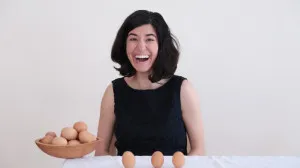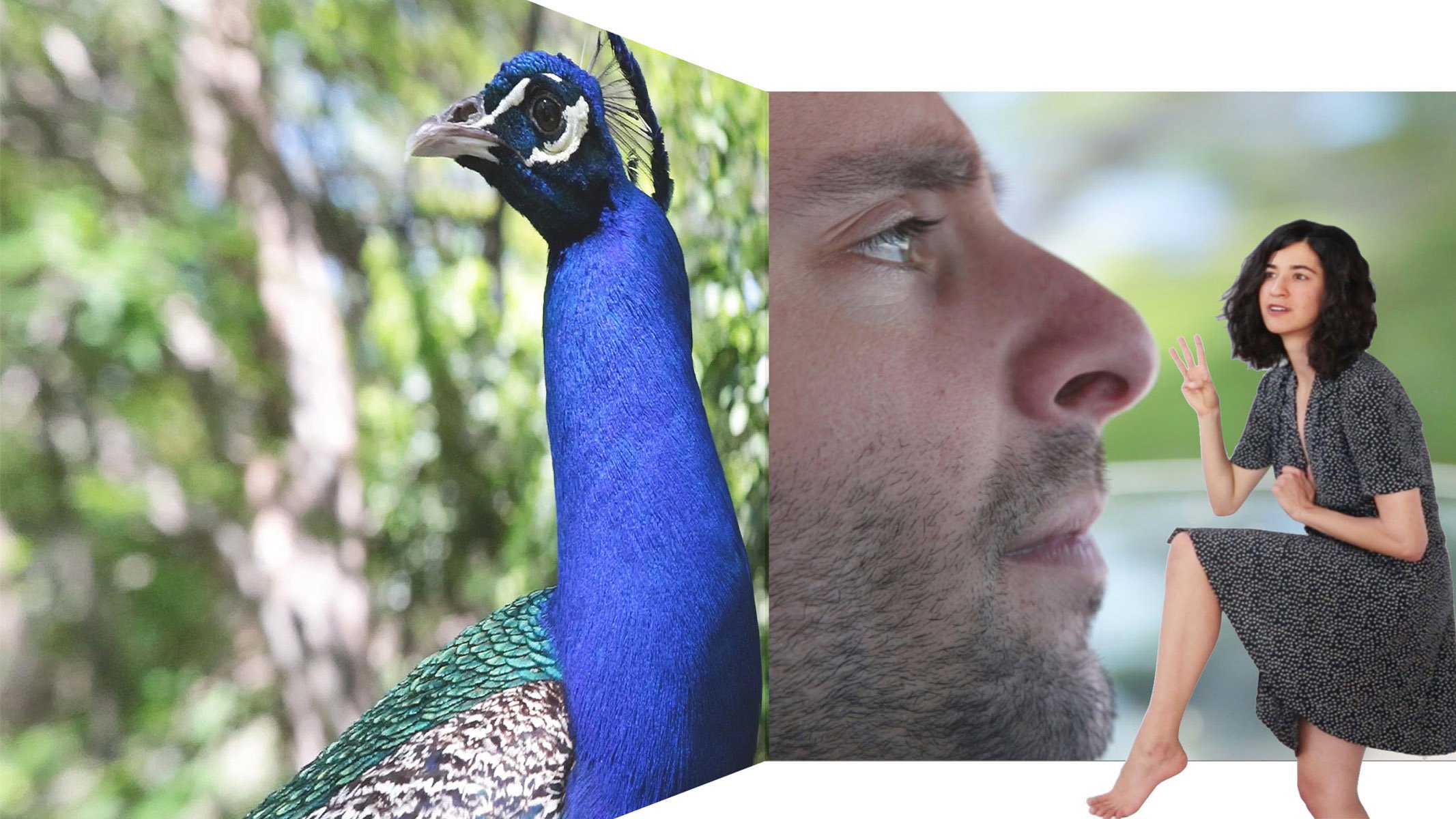
Written and realized by Amy Munz, “Patterns” is a one-woman performance piece that explores the many voices, personas and histories we contain within our “selves.” On an empty stage, surrounded on three sides by video projections, Munz portrays Arnot, a young woman trying to find the logic in her own narrative, the how of her recent love affair.
In other words, we enter the chaotic, sacred and imaginary landscape that is Arnot’s past tense. Munz plays five different characters, including Adela, a fervent teenager, reveling in her first kiss. A few seconds later, she is Abigail, chasing after her dog, intoxicated by the natural world. Windswept meadows, poppy seeds and cattails flit across the theater’s walls. Somewhere in the fluid boundaries between these personas, Arnot’s psychology and personality accumulate, however obliquely.
But there is tension in the warrant that our identities are multiple and mutable: how do we fall in love without a “self” to give away? Here, one of Munz’s characters, Amelia, turns to the Einstein Podolsky Rosen Paradox, which says that the most basic blocks of the universe are always both waves and particles. It’s very natural for us to think in terms of particles, but if we resist the temptation to pin down the world and if we accept its fundamental uncertainty, then we can observe entanglement. Wave states become correlated. One particle’s spin affects its counterpart’s spin. Amelia calls this reflection, this dance and conversation, “graceful, really. A sense of alignment.”
Munz’s intermingling of video art and live performance is most compelling when it, too, embodies “a sense of alignment.” Literal “projections” of the past — places and faces and scenes — trouble and color Munz’s monologues. At times, Munz speaks over or for voices of figures on the screen, much in the way that, in our heads, the voices of our parents, friends and lovers are half ours, half theirs. The effect, in brief, is something like psychological realism, the way memory hurts.
In this vein, “Patterns” is also about the frustrating constraints of recollection and privileges of forgetting. On film, Alex, Arnot’s ex-boyfriend, talks wistfully about the origins of their connection. He laments that he will never see her again for the first time and that her tangibles — her back and her face — are now and forever cloaked in familiarity. Here, Munz seems interested in distinguishing between remembering and reliving: the ways in which life is not film. There is no perfect rewinding, but this enables a future. Novelty is always accessible.
Arnot, too, recalls moments from their relationship. She remembers the time she forgot his birthday and the letter he wrote her when she was only gone a week. Abstracted from context, these memories are like specimens in jars. As an audience, we must weigh their authenticity. When is memory not revisionary? Can we trust our brains to unfold the inconvenient truth?

As Arnot describes Alex, the film plays out a scene on repeat: Munz balances on the edge of a diving board, unwilling to jump, unwilling to move. If she is stuck, it is her own doing. Her limbo is self-imposed.
“Patterns” is the kind of art piece that requires theatergoers to make a choice, too. We must choose to actively invest in our own sense-making. At the same time, our job is to stay open to the possibilities of what can’t know about Munz’s decisions. Where we are open-minded and generous, we are rewarded.
By the end of the performance, there is some suggestion that Arnot is committed to loving, rather than judging, her past. “You never know all the factors,” she says. “You’ll study them and study them,” but, no matter your cognitive efforts, “you stumble into one moment, then another.” From behind the fourth wall, we imagine her jumping, finally, into the pool.
